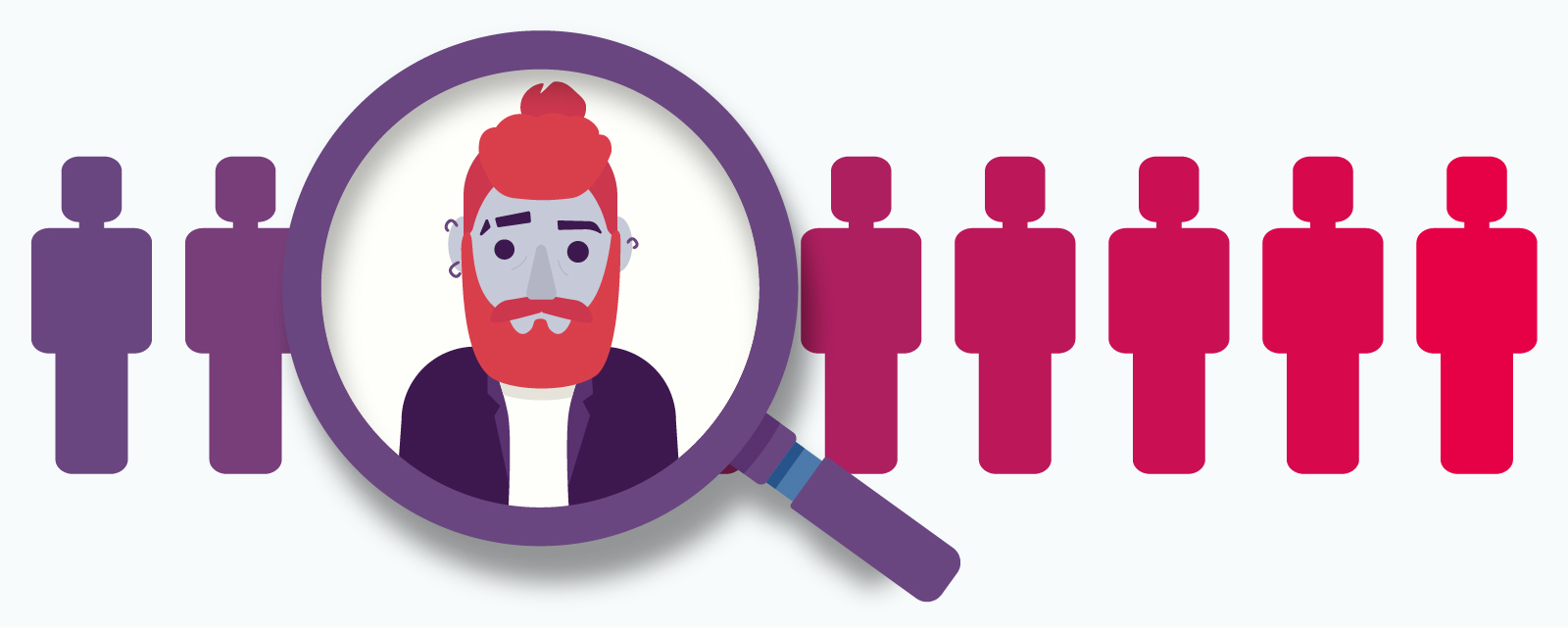The Power of Personalized Experience in M-commerce. Tips for Improving CX of Your App

When you go to your favorite restaurant, either you order the dishes you like or ask for recommendations. Either way, you are satisfied, because the waiter knows your preferences. The overall experience is positive with little to no effort from your side.
It should be the same with your m-commerce app. When users open it, they want you to know their tastes in products. The key here is a personalized customer experience (CX).
What does personalization in mobile commerce look like? How can you find the ideas for changes? What does it take to offer personalized solutions? Let’s dive deeper into this topic.
Key takeaways
- Personalized customer experience (CX) is key in m-commerce apps, focusing on individual users rather than treating the entire audience as one group.
- Personalization requires collecting and processing customer data to deliver tailored content.
- A good personalization strategy can increase customer loyalty, engagement, and retention, while also decreasing abandoned carts and increasing click-through rates.
- Personalization can significantly increase sales by making customers more inclined to make a purchase.
- Examples of personalized customer solutions include: recommended products, personalized notifications, and autocomplete search features.
- It’s essential to identify your goals when developing a personalization strategy.
- Understanding customer needs, behavior, preferences, and pain points is crucial, using data from various sources, including mobile and web analytics, customer feedback, reviews, and interviews.
- User segmentation means organizing users into groups with common traits, which allows for more focused personalization strategies.
- Testing ideas with prototypes and target users is crucial before full implementation to avoid unnecessary costs.
- It’s important to avoid blindly copying competitor’s strategies and instead develop a unique approach based on your own data and goals.
What is a personalized experience?
In short, personalized experience is when you focus on an individual person. This is the opposite of the situation when you treat the entire target audience as one group with the same needs.
It requires collecting and processing transactional and behavioral customer data. With this information, you can deliver the content adjusted to an individual user.
Benefits of personalization
Why should you wrap your head around something like personalized customer experience, anyway?
There are numerous reasons for that. With the right personalization strategy, you can:
- Grow customer loyalty
- Increase user engagement
- Improve the customer retention rate
- Decrease the number of abandoned carts
- Get a higher CTR
But above all, it increases sales. Why? Personalization makes people more likely to think about making a purchase. 76% of respondents declared so in the research presented in the Next in Personalization 2021 Report by McKinsey.
The personalization techniques facilitate choosing the products and services that the consumers could be interested in.
By and large, personalized shopping experience can be a real game-changer. But only when you know how to properly plan and design them.

Examples of personalized customer solutions
- Recommended products – such as complementary goods, recently viewed and similar products, or the ones bought by people with similar preferences.
- Notifications – you can send personalized messages, for example, to inform users about the discounted items from their wishlists.
- Autocomplete search – this feature suggests what users could be interested in; it generates the recommendations of queries they might want to enter in a search box.
Of course, that’s not everything. There are many other personalization methods. It’s up to you to choose the ones that should be useful in your case and adjust it to your possibilities. What should you start with?
Identify the purposes
Spice Girls sang: “Tell me what you want, what you really, really want.” And that’s elementary when it comes to the personalization strategy. So, what is it that YOU want?
All your personalization efforts probably lead to one goal – higher revenue. But there are also some smaller goals you must reach on the way. It’s vital to realize what they are. They tell you what you need to achieve and make it easier to track your progress.
OKRs
With that in mind, choose your OKRs (Objectives and Key Results). The objective is the goal you want to accomplish. Key Results are what you need to do in order to make it happen. Don’t forget – these results must be measurable. It’s good to assign, for example, three results to one objective.
Example
Objective: To increase user engagement in the next 3 months.
Key Results 1: Make 20% of users more interested in the recommended content.
Key Results 2: Encourage 30% of users to comment on the products.
Take the OKRs into account when deciding what features to implement. The solutions you consider should get you a step closer to your goals. Then prioritize your ideas.

Collect necessary customer data
You need to know the needs and expectations of your customers. It’s also vital to understand their behavior. Then you can base your personalization strategy on that knowledge.
There are plenty of sources of information available. Some help you see the trends and make general observations about your customers. You can use them to segment users.
Segmentation is a way to organize your data. It’s when you group users into smaller clusters of people with something in common (e.g., similar monthly cart value or age). Segments make it easier to analyze the information and choose the groups with the highest value to your business.
You can use different personalization methods with customers from different segments. But first, you need data that enables offering personalized features in your app for mobile devices. Here are some examples of sources worth consideration.
Mobile and web analytics
You probably know that configuring analytics is important when you run e-commerce. But it’s easy to get flooded with customer data with no clue how to use it. You need to sift the collected information. When it comes to personalization, the selection depends on what you want to achieve.
- Acquisition channels – get to know where your users come from, so you can figure out which channels perform best in the case of some target groups.
- Demography – customers look for different things depending on their age, location, etc. Such data makes it easier to choose groups of users that are more important to your business.
- Most popular content – find out what categories customers usually display and what are their favorite types of products. Look into the pages with the highest number of interactions. It helps you see what’s trending and what are each person’s preferences.
- New and returning visitors – your recommended content should differ depending on whether a user sees your app for the first time or not. For example, returning users could be more interested in recently viewed products while new users would prefer the section with trends.
- Search history – based on this data, it’s possible to offer users well-adjusted search suggestions (so they don’t need to type long phrases themselves).
- Return and purchase history – such information about customers’ preferences allows you to select the products that they might like.
- Contacting customer service – get to know what people ask about to create better-tailored mobile shopping experience.
Some data will help you choose the best features or communication channels for certain segments of people. Others are necessary to provide personalized solutions for each customer. You are going to need both types to create optimal personalized customer service.
Reviews, customer feedback, and interviews
Personalization should make customers’ lives easier. So, you need to realize what users find problematic. How? Analyze the opinions they share about your products or services. Don’t limit yourself to your own online store and its comment sections or issues raised to support agents. Maybe you can find valuable information on Facebook groups or Reddit threads dedicated to your niche?
We also advise you to create opinion polls and surveys. Collecting customer feedback is the key to understanding their needs and expectations. Find out what people say about your brand and how much they value your offer. You can also interview some of them to gather new insights.
Competitor analysis
Find your brand on the market landscape. Check how your app presents itself among the competitors and analyze what people like or dislike in their solutions. It can be a great source of inspiration. This way, you can also discover customer expectations you didn’t know about.
Brainstorm the solutions
When you know your goals and the most important segments of users, it’s time to think about the solutions.
It’s the stage where teamwork is especially important. Engage specialists from different departments whose work can be impacted by personalized experiences. Invite them to a brainstorming session or a workshop. They may have a different perspective on some matters. Together you increase your chances of coming up with successful ideas.
A customer journey map is a tool that may come in handy when brainstorming. Focus on the personas that represent a particularly valuable segment of customers. Take a deeper look at their problems and motivations. Depending on peoples’ behavior, you can think of solutions that should correspond with their needs and behaviors.

Consult the development team
Make sure the ideas you have are feasible. Consult them with the mobile app development team and let them check if your backend enables such solutions. Sometimes, features that seem easy to implement are quite complicated. Creating them takes more time and resources than you expect. It depends on various factors, so it’s best to discuss it with IT specialists.
Try to make some use of the MoSCoW method to set the priorities together with developers. It helps you determine what’s the most and least important and how hard it is to implement.
Test your ideas
What if users won’t be as enthusiastic about your future features as you are? Better be safe than sorry and run some tests to verify your ideas beforehand. Build the prototype and ask the representatives of your target group to work on it, so you could see their reactions. This way, you can check if people know how to use your solution. It will help you avoid unnecessary costs.
Follow your own voice (and strategy)
The worst thing you can do is implement competition solutions to your mobile commerce app on a 1:1 scale. Here’s why it should be avoided:
- You don’t know if the feature they use really works for them. Maybe they already plan to change it?
- They may collect completely different data that allows them to offer personalized features that are currently out of your reach.
- These m-commerce apps can work on a system with possibilities unavailable to you.
- You don’t share the same goals and target groups. There’s a chance that your customers need something different.
- Personalization should increase the product value. You need to convince users that your app is worth their attention. It should offer something they can’t find in the competitors’ mobile apps.
Delivering personalized customer experiences in m-commerce
Personalization plays a significant role when it comes to building the best m-commerce experiences. It also helps to increase customer satisfaction. All in all, it’s a tested way to build customer loyalty.
Nevertheless, it’s not a cure for all the problems related to apps and CX. You need to take care of the core features first. Usually, we advise our clients to wait with personalized service and focus on the MVP as a priority. You must ensure users with the basic solutions that solve their problems. Only then can you gradually improve the customer experience.
So, if you need help with the MVP or personalization, let us know. Together we’ll identify the priorities and discuss the feasibility of your ideas.







